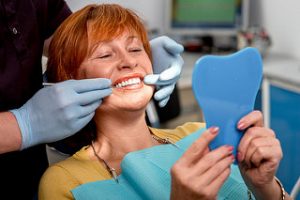
October is here!! This means only 3 months left in 2018. It’s crunch time to get everything done that we haven’t gotten done during the rest of the year. For those with remaining dental benefits, it’s also the time of year to consider utilizing those so you don’t lose them.
Unused dental benefits go directly back to the insurance company, which generates hundreds and hundreds of thousands of dollars for the insurance companies each year. Dental insurance companies count on the fact that many people will not claim their $1000 or so in benefits by the end of the calendar year. Those with dental benefits should look for legitimate means to use these benefits before… (Read More)







 Do your gums bleed when you brush or floss? This isn’t a toothbrush or flossing problem, it’s the first sign of periodontitis. Around 50% of American adults suffer from mild, moderate, or severe periodontal (gum) disease. The first stage of this disease is called gingivitis. Keep reading to learn the differences between gingivitis and periodontitis as well as how a mild health issue like bleeding gums can progress into something much worse.
Do your gums bleed when you brush or floss? This isn’t a toothbrush or flossing problem, it’s the first sign of periodontitis. Around 50% of American adults suffer from mild, moderate, or severe periodontal (gum) disease. The first stage of this disease is called gingivitis. Keep reading to learn the differences between gingivitis and periodontitis as well as how a mild health issue like bleeding gums can progress into something much worse.
